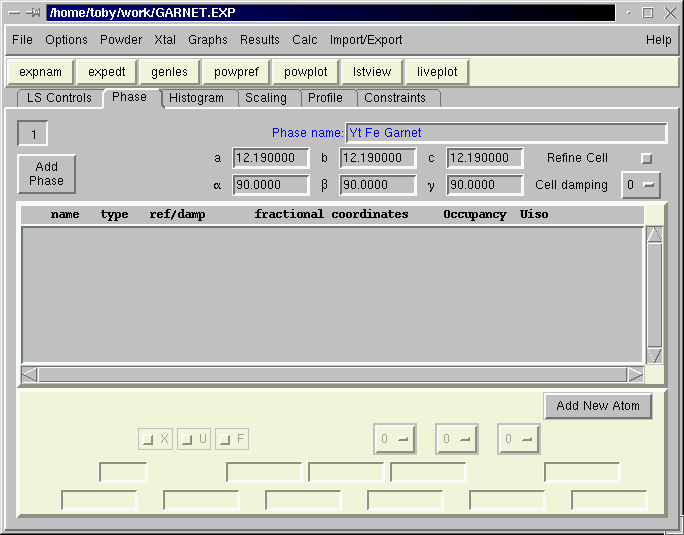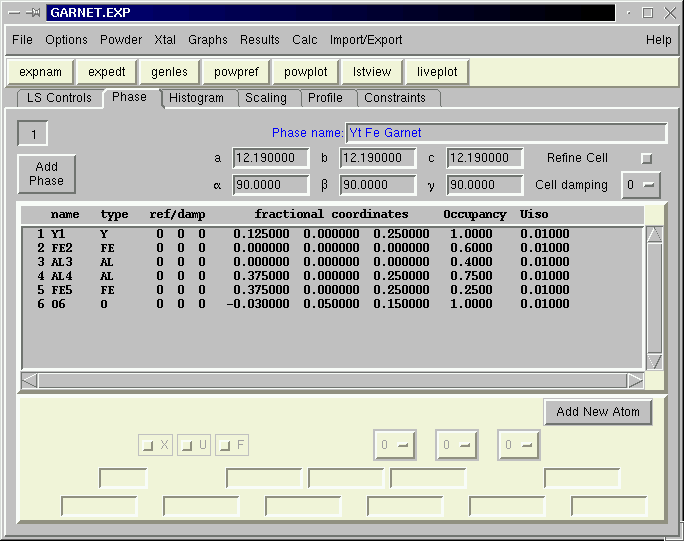
|

|
|
| Home | Live Data | Instruments | CHRNS | Proposals |
EXPGUI Tutorial: Garnet (part 2)
2. Add a phase and atoms to the Experiment
The next step is to define a phase. (Note that in EXPEDT, one must define a phase before reading in histograms but in EXPGUI, this can be done in either order.) Switch to the Phase pane, and press the "Add Phase" button.

Enter the appropriate information in the add new phase window and press the "Add" button.
Since a common source of errors is to improperly format the space group for GSAS, the generated operators are shown in a window. These should be checked.
Since the operators above are correct, press the Continue button and the phase is added and the output created from adding the phase is shown in a window. Press OK to continue. Press the "1" button that has just been added to the Phase pane to display the phase you have just entered.

Now we will add the atoms to the phase by pressing the "Add New Atom" button in the lower left of the Phase pane.
At first the add atom menu appears with room for a single atom to be added. Press the "More atoms" button 5 times to create spaces for six atoms and add the atom information found on page 66.
After all atoms have been typed in, press the "Add Atoms" button and then the screen below appears, so that it can be verified that the atoms have been added correctly.
After pressing OK. The contents of the phase is displayed as is shown below.

(.EXP Snapshot: garnet2.exp )
Previous Step: Create a GSAS Experiment File
Next step: Add data (histogram) to the Experiment
Comments, corrections or questions: crystal@NIST.gov
Last modified 02-August-2007 by website owner: NCNR (attn: Craig Brown)
$Revision: 1.2 $ $Date: 2002/04/12 21:34:08 $